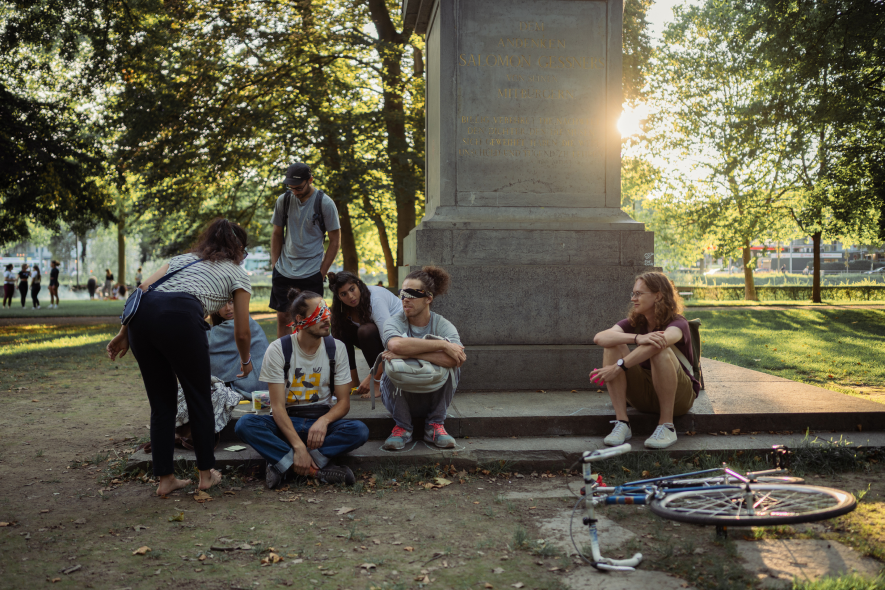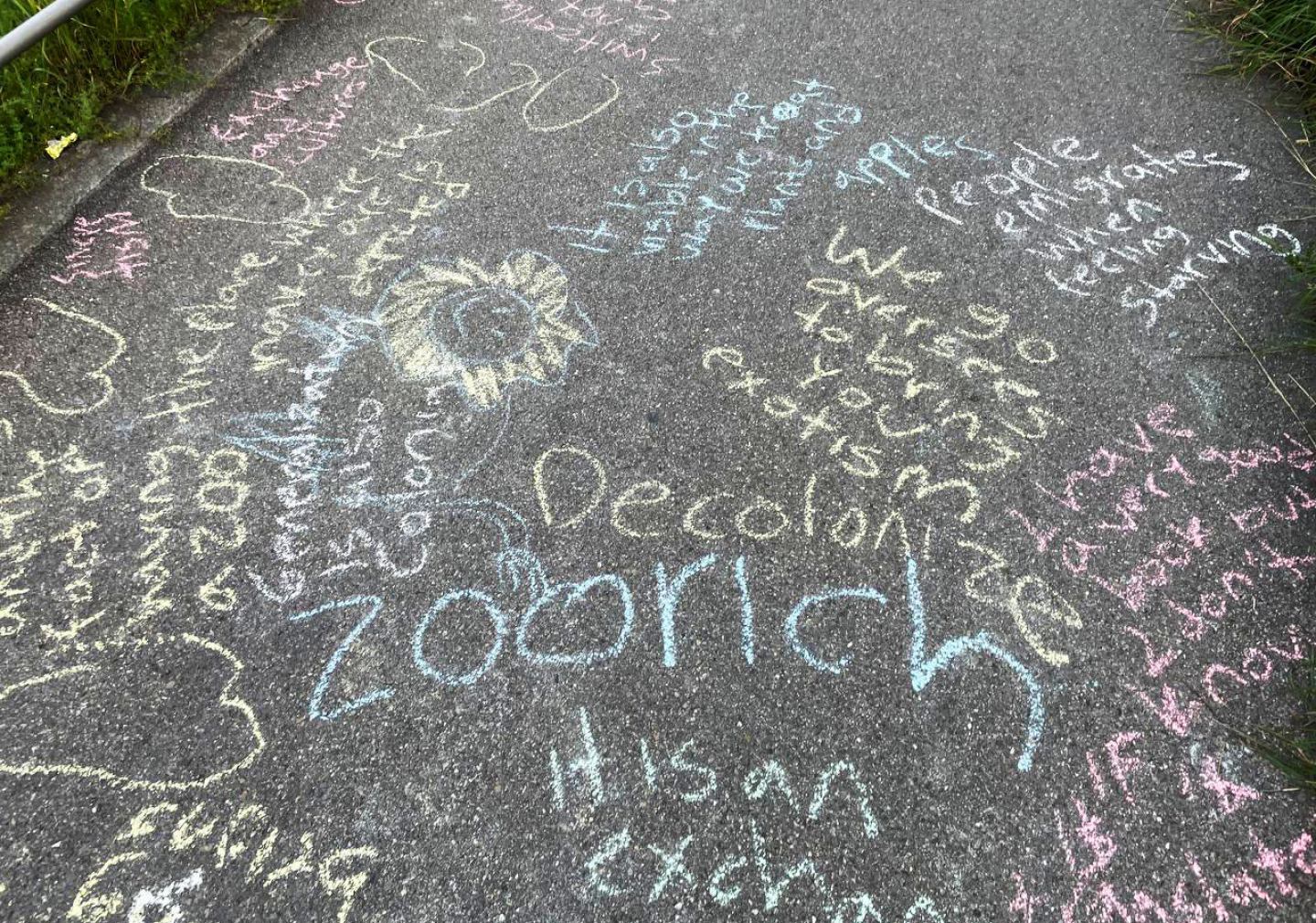Theory and method
Walking is a practice that rescales the world to the proportions of our bodies, exposing us to and immersing us in specific conditions. It changes our perception and routine and allows us to transform our world view. A sensory walk is a methodology focused on collective embodied experiences in the public space. We invited people to walk together following a short route to reflect on the role of subjectivity, the perception of our bodies and how this shapes our experience and relationship with our environment. We based this session on the guide for a decolonial walk taken from the nanopolitics handbook (2013).
- Amplify the senses: deep walking entails focused attention and deep listening.
- Take into consideration your own body and corporeality.
- Take notes, and/or make drawings.
- Locate colonial sites while walking, be it a building, a sign, a name, an image.
- Stop at significant points and observe.
- Share your impression with others and discuss.
- Imagine and discuss what could be done to decolonize the site.
- Search for signs of resistance, resilience, disavowed and counter-histories.
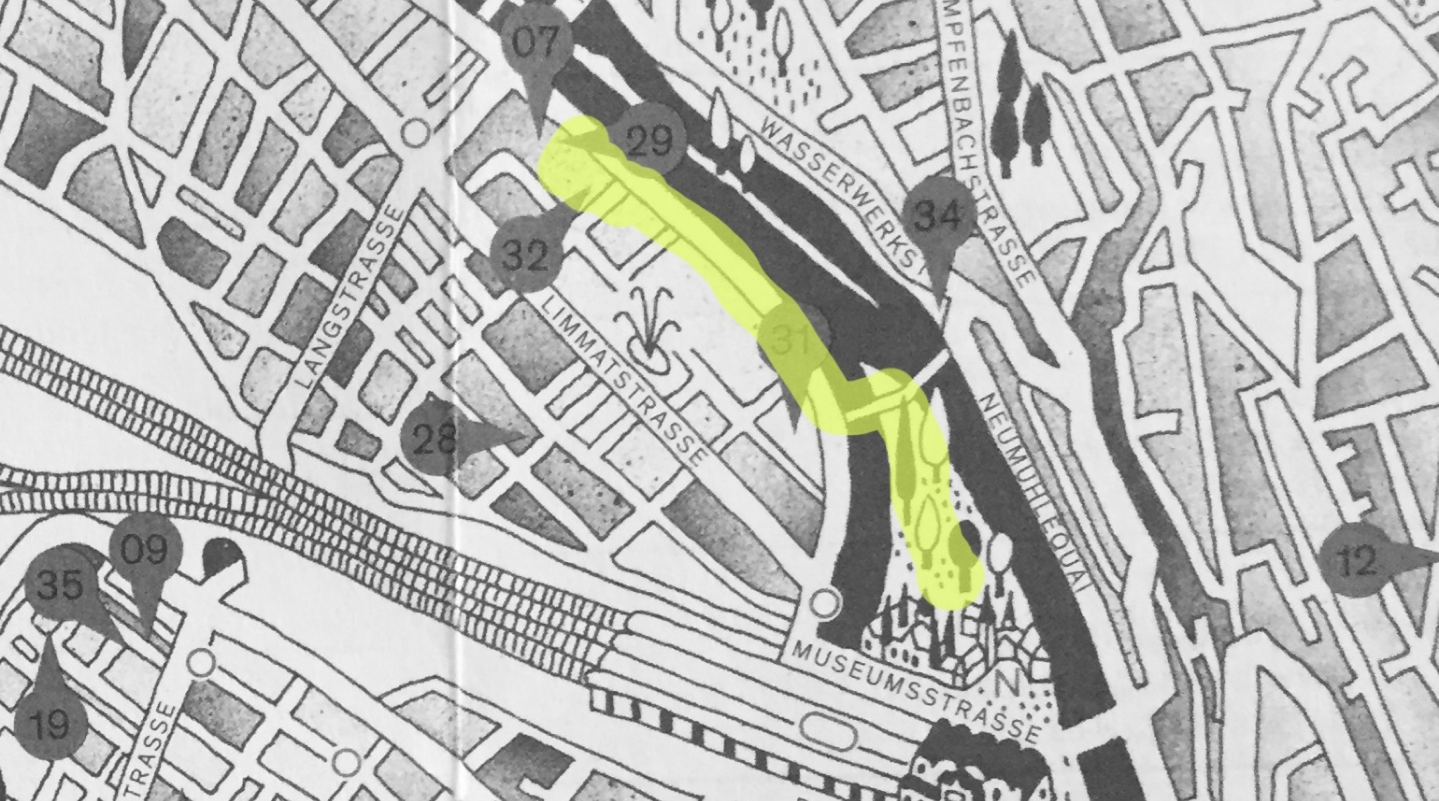
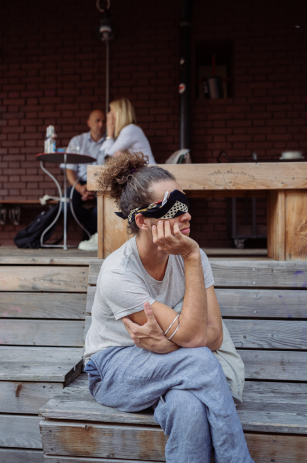
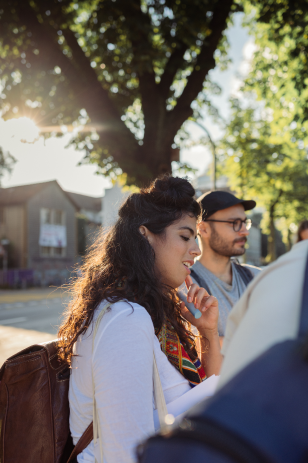
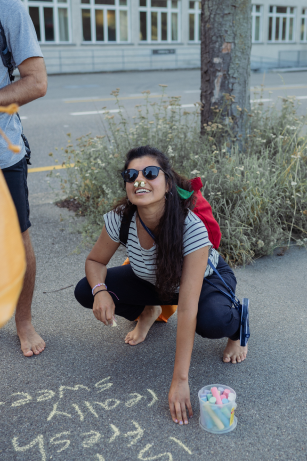
About the workshop
In this session, we invited participants to explore the public space from a sensory and embodied perspective. Our proposal aimed at forming new connections with the city and to reflect on the ways our personal experience interacts with public space. We departed from these questions:
- Who is walking the city?
- How do we feel when walking in the city?
- How are we perceived and how do we perceive others?
- What languages and sounds do we hear?
- In which way do we leave traces when we walk?
The walk focused on our senses: eyesight, hearing, touch, and smell, inviting participants to enhance or limit theirs: walking blindfolded, barefoot or with their ears covered. Our route began at the Photobastei (Sihlquai 125). We started by following the riverside path up the Limmat and with no ending point in mind we let ourselves be guided by the natural speed and conversations that arose. Eventually we were guided to the Platzspitz where we sat down and discussed our experiences. This method brought awareness to our bodily capacities, to the process of walking and what happens in between destinations. It acted as a reminder of how every journey is unique.

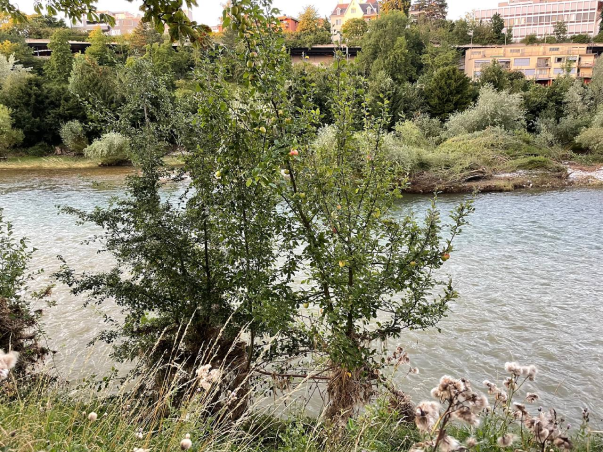
- A form of evasion of modernity
- a way of mocking it
- a change of pace
- a way of distancing oneself
- a way of sharpening the senses.
- It involves moving and perceiving without much more than ourselves.
- Walking, in the context of the contemporary world, could be a form of nostalgia or resistance.
- Praise of walking. David Le Breton, 2000, p2.

- «here smells like honey»
- «no fue particularmente interesante»
- «el sonido acompaña ahora que no hay coches»
- «lo interesante del tubo es no saber que hay más allá»
- «I smell plastic»
- «people emigrate when feeling starving»
- «we go oversees to nrimg you exotism»
- «it is also visible in the way we treat plants a apples»
- «the place where monkeys are depicted»
- «invisible landmarks»
- «Why isn’t there a memorial here?»
- «I know people who lost people here»
- «Where are the memorials?»
- «this place is heavy loaded»
- «the only way to reach people is by talking»
- «this is the first time i’m here with a person from Zurich»
- «my hands smell like soap»
- «Nationaliste landmark»
- «for many people this is a summer place»
- «this place scares me»
- «he had a daughter with a slave woman»
- «they basically build the Gotthard tunnel»

